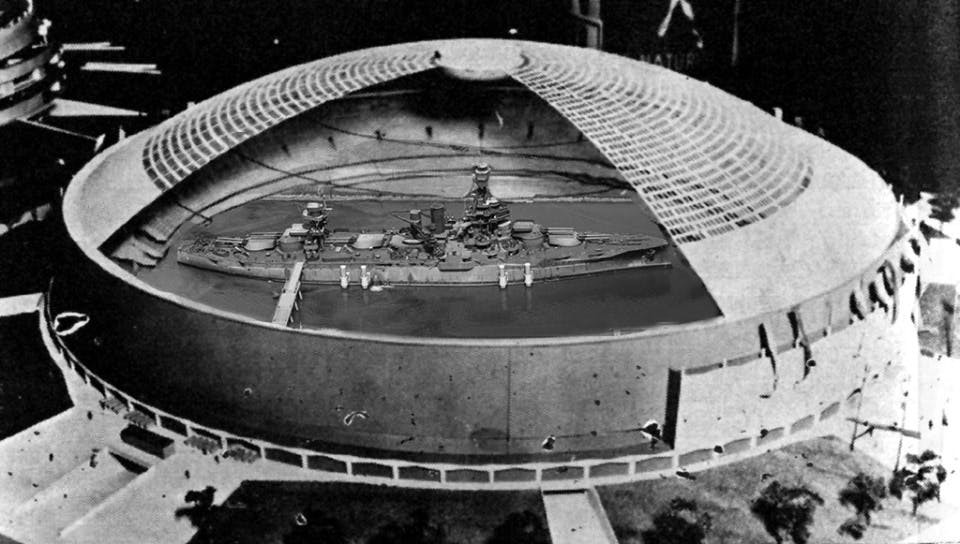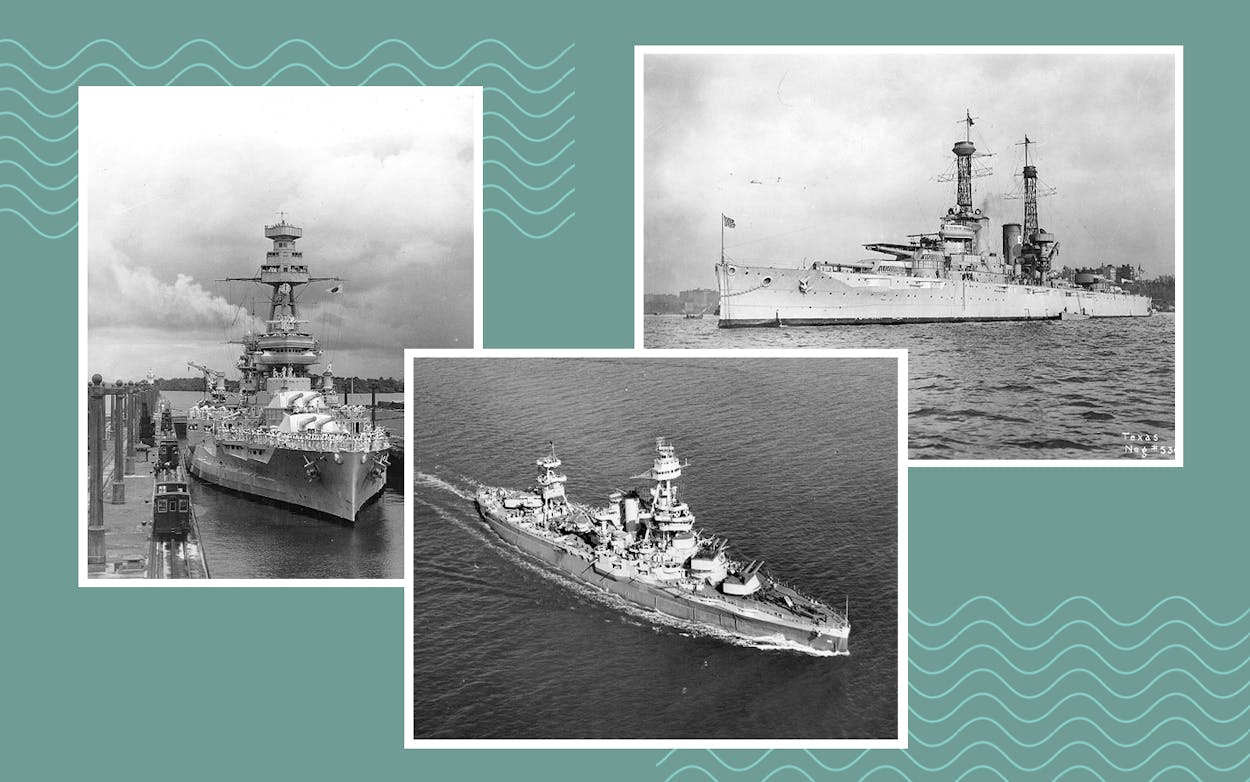After 70 years at its berth in the shadow of the San Jacinto Monument east of Houston, the USS Texas will be moved. As Neil Young once reminded us, rust never sleeps, and after all those decades of steeping in the salt bath at the mouth of Buffalo Bayou, the hull of the battleship is said to be paper-thin in spots. According to the Houston Chronicle, last year’s 80,000 paid visitors brought $1.2 million in revenue, a mere fraction of what’s needed to maintain the Texas.
“It’s a losing proposition, and frankly the state is tired of pouring money into it,” said Bruce Bramlett, executive director of the Battleship Texas Foundation. “It needs to be somewhere where it’s going to track four or five times that many people.”
The ship’s future is uncertain. After transport to a Mobile, Alabama, shipyard for repairs, the Texas will be in search of a forever home. A vague plan to park her in Galveston has been discussed, and while that city is a prime Texas Gulf Coast tourist location, the scheme lacks that certain “We do things big here” quality for which we Texans have long been renowned.
Here, then, are five alternate visions for what might be done with the world’s last surviving dreadnought:
Fend Off Russian Attacks
As it happens, there’s already a published blueprint of sorts for the Texas’s future. This would be The Ayes of Texas, a Reagan-era Cold War science fiction thriller by Daniel da Cruz, a World War II Marine veteran.
Part one in a trilogy, The Ayes finds an ad hoc team of disabled veterans overhauling the Texas just in time for the state to secede from America and stave off a Soviet naval invasion of the Second Republic of Texas via the Houston Ship Channel. In the climactic battle, the Texas, firing particle-beam laser cannons at Russian warships in every direction, and riding atop an enormous napalm tsunami, sinks the battleship Karl Marx, the Russian flagship. All hands on all ships go down, but the Republic of Texas is spared a Communist takeover.
The book’s reviews on Goodreads are priceless. Selections from my favorite, a five-star rave from James Kingman:
“The 1982 view of the 1998 future from the 2013 present is adorable in parts, prescient in others, and entertaining all around. The characters were flatter than flat, with their motivations more simplistic than Mike Hammer, but that only makes this better … If your grandfather took Isaac Asimov’s lunch money and bet it against Tom Clancy that he could write a more jingoistic book overnight, this would be the result.”
But how much of its plot is pure fiction? Navy veteran Jeff Wall reminded me of The Ayes of Texas’s existence and, while acknowledging the book’s absurdity, writes, “It’s strangely relevant today, what with the Russian influence in the election and the White House, and the new Space Force.”
Patrol the (Other) Border
Given that Vladimir Putin’s Russia doesn’t seem as likely as those of his Cold War predecessors to launch a full-on military invasion of Texas, whether as a state of the Union or a Lone Star Republic—and given that laser death-ray particle-beam weapons remain a pipe dream—perhaps we could scale back and adapt da Cruz’s vision for another theater of operations:
Refit, rearm, and recommission the Texas under the banner of the same Texas State Guard Governor Greg Abbott put on high alert during the summer of Jade Helm. Once battle-fit and voyage-ready, relaunch the Texas on the Red River and put it on patrol. We just want to show our friends from Oklahoma that we are “monitoring” their doings, the same way our State Guard kept a close eye on the United States Army during Jade Helm.
Roll the Dice
Or let’s let Tilman Fertitta do what Tilman Fertitta does. Have the head of the Landry’s hospitality empire transform the ship with a boardwalk, Ferris wheel, roller coaster, and other rides on the deck and a hotel/restaurant/casino complex below. The presence of gambling might require anchorage in international waters or on the Louisiana side of the Sabine River; however, even an unarmed Texas would foil vice raids even more easily than the Maceo Brothers’ long-ago subterfuges in Galveston’s renowned Balinese Room.
Back in the 1940s and ‘50s, Fertitta’s great-great uncles ran their illegal casino at the end of a long pier extending into the Gulf. By the time the authorities got through the gate on shore and made their way to the end of the pier, all the roulette wheels and card tables had been concealed or flipped over and transformed into dinner tables. Imagine how easily you could duplicate a similar operation in the Texas’s revamped, World War II–themed Golden Nugget Messdeck brought to you by Landry’s, deep in the bowels of the battleship, especially with alert personnel on the bridge scanning the horizons for approaching heat. As their other name implies, battleships dread nought.
Patronize the Arts
We could haul the Texas far from the coast or any other body of water. Get her up to the Panhandle, dig a huge hole, use the dirt as ballast to fill in part of the hollowed-out hull, and ease the Texas into the pit, bow-first, until it stands at the same angle as the Great Pyramid of Giza, just like those ten tagged-up postwar Caddies in the desert outside Amarillo. And voilà: the Cadillac Ranch transforms into the Cadillac-Battleship Ranch.
Presented with this idea, Hudson Marquez, a member of the Ant Farm Collective that built the Cadillac Ranch in 1974, said you could make a similarly bold statement without going to all that trouble.
“Some oil and gas magnate should transport Texas to his ranch,” he writes in an email. “Just have it set down like it was cruising along through the wheat fields. Plenty of graffiti space.”
Kill Two Birds
Navy vet-turned-photographer/musician Jay Lee has a simple, elegant solution: move one of Houston’s giant white elephants into the other.

Or as he puts it: “A single solution for two Texas problems.”
- More About:
- Texas History
- Military







